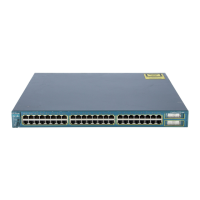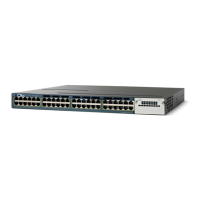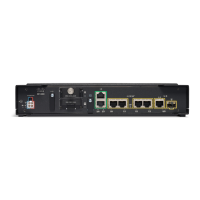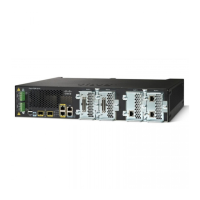Contents
xxiv
Catalyst 3550 Multilayer Switch Software Configuration Guide
78-11194-09
CHAPTER
30 Configuring EtherChannels 30-1
Understanding EtherChannels 30-1
Understanding Port-Channel Interfaces 30-2
Understanding the Port Aggregation Protocol and Link Aggregation Protocol 30-3
PAgP and LACP Modes 30-4
Physical Learners and Aggregate-Port Learners 30-5
PAgP and LACP Interaction with Other Features 30-6
Understanding Load Balancing and Forwarding Methods 30-6
Configuring EtherChannels 30-7
Default EtherChannel Configuration 30-8
EtherChannel Configuration Guidelines 30-8
Configuring Layer 2 EtherChannels 30-9
Configuring Layer 3 EtherChannels 30-11
Creating Port-Channel Logical Interfaces 30-11
Configuring the Physical Interfaces 30-12
Configuring EtherChannel Load Balancing 30-14
Configuring the PAgP Learn Method and Priority 30-15
Configuring the LACP Port Priority 30-16
Configuring Hot Standby Ports 30-16
Configuring the LACP System Priority 30-17
Displaying EtherChannel, PAgP, and LACP Status 30-18
CHAPTER
31 Configuring IP Unicast Routing 31-1
Understanding IP Routing 31-2
Steps for Configuring Routing 31-3
Configuring IP Addressing on Layer 3 Interfaces 31-4
Default Addressing Configuration 31-4
Assigning IP Addresses to Network Interfaces 31-5
Use of Subnet Zero 31-6
Classless Routing 31-7
Configuring Address Resolution Methods 31-8
Define a Static ARP Cache 31-9
Set ARP Encapsulation 31-10
Enable Proxy ARP 31-10
Routing Assistance When IP Routing is Disabled 31-11
Proxy ARP 31-11
Default Gateway 31-11
ICMP Router Discovery Protocol (IRDP) 31-12

